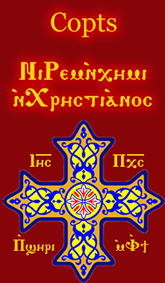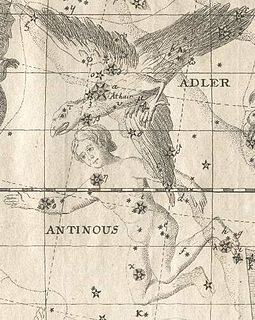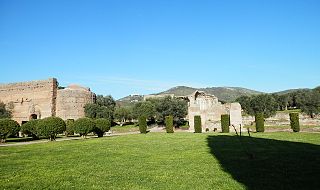
The traditional Chinese calendar, is a lunisolar calendar which reckons years, months and days according to astronomical phenomena. In China it is defined by the Chinese national standard GB/T 33661–2017, "Calculation and promulgation of the Chinese calendar", issued by the Standardisation Administration of China on May 12, 2017.

Hadrian was Roman emperor from 117 to 138. He was born into a Roman Italo-Hispanic family that settled in Spain from the Italian city of Atri in Picenum. His father was of senatorial rank and was a first cousin of Emperor Trajan. He married Trajan's grand-niece Vibia Sabina early in his career, before Trajan became emperor and possibly at the behest of Trajan's wife Pompeia Plotina. Plotina and Trajan's close friend and adviser Lucius Licinius Sura were well disposed towards Hadrian. When Trajan died, his widow claimed that he had nominated Hadrian as emperor immediately before his death.
The 110s decade ran from January 1, 110, to December 31, 119.
The 130s decade ran from January 1, 130, to December 31, 139.
Year 106 (CVI) was a common year starting on Thursday of the Julian calendar. At the time, it was known as the Year of the Consulship of Commodus and Civica. The denomination 106 for this year has been used since the early medieval period, when the Anno Domini calendar era became the prevalent method in Europe for naming years.
Year 124 (CXXIV) was a leap year starting on Friday of the Julian calendar. At the time, it was known as the Year of the Consulship of Glabrio and Flaccus. The denomination 124 for this year has been used since the early medieval period, when the Anno Domini calendar era became the prevalent method in Europe for naming years.
Year 130 (CXXX) was a common year starting on Saturday of the Julian calendar. At the time, it was known as the Year of the Consulship of Catullinus and Aper. The denomination 130 for this year has been used since the early medieval period, when the Anno Domini calendar era became the prevalent method in Europe for naming years.
Year 111 BC was a year of the pre-Julian Roman calendar. At the time it was known as the Year of the Consulship of Serapio and Bestia. The denomination 111 BC for this year has been used since the early medieval period, when the Anno Domini calendar era became the prevalent method in Europe for naming years.

Antinous or Antinoös was a Bithynian Greek youth and a favourite beloved of the Roman emperor Hadrian. After his premature death before his twentieth birthday, Antinous was deified on Hadrian’s orders, being worshipped in both the Greek East and Latin West, sometimes as a god (theos) and sometimes merely as a hero.

The Coptic calendar, also called the Alexandrian calendar, is a liturgical calendar used by the Coptic Orthodox Church and also used by the farming populace in Egypt. This calendar is based on the ancient Egyptian calendar. To avoid the calendar creep of the latter, a reform of the ancient Egyptian calendar was introduced at the time of Ptolemy III which consisted of the intercalation of a sixth epagomenal day every fourth year. However, this reform was opposed by the Egyptian priests, and the reform was not adopted until 25 BC, when the Roman Emperor Augustus imposed the Decree upon Egypt as its official calendar. To distinguish it from the Ancient Egyptian calendar, which remained in use by some astronomers until medieval times, this reformed calendar is known as the Coptic or Alexandrian calendar. Its years and months coincide with those of the Ethiopian calendar but have different numbers and names.

Japanese calendar types have included a range of official and unofficial systems. At present, Japan uses the Gregorian calendar together with year designations stating the year of the reign of the current Emperor.
A calendar era is the period of time elapsed since one epoch of a calendar and, if it exists, before the next one. For example, the Gregorian calendar numbers its years in the Western Christian era.

Memoirs of Hadrian is a novel by the Belgian-born French writer Marguerite Yourcenar about the life and death of Roman Emperor Hadrian. First published in France in French in 1951 as Mémoires d'Hadrien, the book was an immediate success, meeting with enormous critical acclaim. Although the historical Hadrian wrote an autobiography, it has been lost.

Antinous is an obsolete constellation no longer in use by astronomers, having been merged into Aquila, which it bordered to the north.

Hadrian's Villa is a large Roman archaeological complex at Tivoli, Italy. A UNESCO World Heritage Site, it is the property of the Republic of Italy, and has been directed and run by the Polo Museale del Lazio since December 2014.
A regnal year is a year of the reign of a sovereign, from the Latin regnum meaning kingdom, rule. Regnal years considered the date as an ordinal, not a cardinal number. For example, a monarch could have a first year of rule, a second year of rule, a third year of rule, and so on, but not a zeroth year of rule.

Antinoöpolis ; was a city founded at an older Egyptian village by the Roman emperor Hadrian to commemorate his deified young beloved, Antinoüs, on the east bank of the Nile, not far from the site in Upper Egypt where Antinoüs drowned in 130 AD. Antinoöpolis was a little to the south of the Egyptian village of Besa (Βῆσσα), named after the god and oracle of Bes. Antinoöpolis was built at the foot of the hill upon which Besa was seated. The city is located nearly opposite of Hermopolis Magna, and was connected to Berenice Troglodytica by the Via Hadriana.

The Antinous Mondragone is a 0.95 m high marble example of the iconographic type of the deified Antinous, of c. 130 AD. It can be identified as him from the striated eyebrows, full lips, sombre expression and the head's twist down and to the right, whilst its smooth skin and elaborate, centre-parted hair mirror those of Hellenistic images of Dionysus and Apollo.

The Republic of China calendar or Minguo calendar is one of the calendars used in the Greater China area. The calendar uses 1912, the year of the establishment of the Republic of China (ROC), as the first year. The term "minguo" simply means "republic". The ROC calendar follows the tradition of using the sovereign's era name and year of reign, as did previous Chinese dynasties. Months and days are numbered according to the Gregorian calendar. The ROC calendar has been in wide use in the ROC since 1912, including in early official documents.
Antinous was the favorite and lover of Roman Emperor Hadrian.










